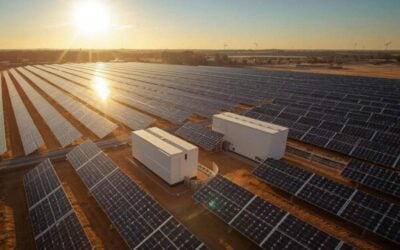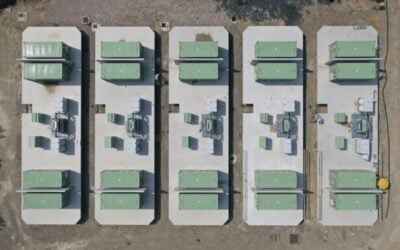SolarEdge’s Storedge, officially launched at Intersolar Europe and compatible with Tesla’s Powerwall (pictured) is now available internationally. Image: SolarEdge.
SolarEdge’s Tesla-compatible inverter available internationally
13 January 2016: Israel-headquartered smart inverter manufacturer SolarEdge Technologies’ inverter-based storage solution StorEdge is now available internationally in Australia, Europe, South Africa, and the US.
StorEdge, which is DC-coupled and compatible with Tesla’s Powerwall home battery, helps residents to reduce electricity bills, by storing excess solar energy and using this energy for self-consumption and backup purposes.
SolarEdge’s product can also be used for time-of-use management to avoid high rates of electricity use from the grid at peak times. The StorEdge is based on a single inverter, which can manage and monitor solar energy generation, consumption and storage. SolarEdge has already installed some of it StorEdge systems in select locations globally during 2015.
Try Premium for just $1
- Full premium access for the first month at only $1
- Converts to an annual rate after 30 days unless cancelled
- Cancel anytime during the trial period
Premium Benefits
- Expert industry analysis and interviews
- Digital access to PV Tech Power journal
- Exclusive event discounts
Or get the full Premium subscription right away
Or continue reading this article for free
Launching the product at Intersolar Europe in May 2015, SolarEdge said the solution was suited to markets where the falling away of subsidies for solar output has led to households saving money on bills by using their own PV-generated power rather than receiving payments under a feed-in tariff (FiT).
By Tom Kenning.
AES completes 10MW Netherlands ancillary services project
13 January 2016: AES announced this week that it has completed work on a 10MW energy storage array in the Netherlands which will serve the grid-balancing ancillary services market on a commercial basis.
Using AES’ Advancion 4 energy storage solution, the array will provide 20MW of battery-based flexible resource to the European Common Market as well as to Holland’s grid. The system enables the flexible dispatch of existing generation assets as well as aiding the integration of renewables.
The system has been delivered to Holland’s transmission system operator TenneT. It will provide Primary Control Reserve (PCR), matching supply and demand on the local grid by using power stored in its batteries to respond quickly to grid imbalances. PCR is known by a number of other terms, such as frequency regulation, in the US and elsewhere.
The Netherlands array was the first large-scale project in Europe AES signed up to work on; however, in the interim between that announcement and this week’s connection of the system, the company finished a project in County Antrim, Northern Ireland, which is the same size.
In related news, AES recently signed a supply contract with lithium battery maker LG Chem for 1GWh of batteries, which analyst Dean Frankel at Lux Research said could be worth an estimated US$300 million.
AES recently also finished work on a 10MW system in Northern Ireland (pictured). Image: AES.
Japan’s Sumitomo Corporation switches on grid-balancing project for US PJM market
13 January 2016: Elsewhere, one of Japan’s biggest trading companies has switched on another grid-balancing battery system, this time for PJM’s frequency regulation market in the US.
Sumitomo Corporation purchased an interest in the Willey Battery Utility project in Hamilton County, Ohio, from Renewable Energy Systems, and construction began in April last year. The trading company is involved in a vast number of areas of business, which include developing solar and wind power projects.
PJM operates 13 electrical grids in the US and has drawn attention globally for developing a market for frequency regulation services which rewards the fast-responding ability of intelligent battery-based storage to balance supply and balance of power on the network. The market this week also saw Axion Power, a supplier of lead acid battery-based storage systems file an interconnection request for a 12.5MW system.
This has had two main impacts – storage developers have obviously clamoured to be involved in the market for its robust pricing signals, while batteries, responding in seconds or microseconds to signals to ramp up or down that would take fossil fuel generators like gas peaker plants at least around 15 minutes, could displace and replace fossil fuel generation.
The only caveat to the enthusiasm around PJM’s grid-balancing market has been the recognition that it could become quickly saturated. In a recent blog for Energy Storage News, Lux Research’s Dean Frankel pointed out that 263MW and 148MWh of storage has been installed in the PJM service area since 2011, “but growth prospects are severely limited as the market is reportedly evaluating a cap at 300MW, forcing developers to look at alternate US frequency regulation markets.”





